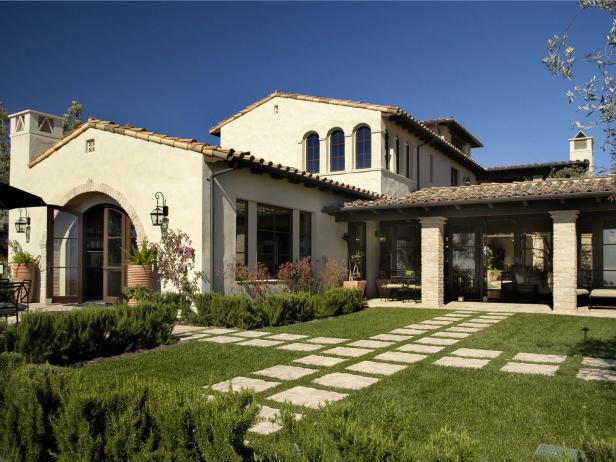Designing Paths for Your Landscaping

Whether you have a large property organized into a series of outdoor rooms or an intimate postage-stamp-size space, you need a way-finding system that tells you where to enter, where to stop or pause, and where to go next. The circulation pattern should follow a central axis, with arteries branching off to various points of interest.
Paths provide separation and definition of public and private areas, while also connecting and unifying them. Focal points guide and orient your eye as you move through the landscape.
"I always start with the hardscapes, which are the bones of a landscape," says Pete Marsh, a landscape designer with Buck & Sons in Columbus, Ohio. "Patios and pathways help you define spaces and connect them. The plants then follow to soften or enhance the hardscape elements."
Entrance. The entrance transitions people between outdoors and indoors, so a front walk should leave no doubt where to go and be positioned to provide easy access from the sidewalk or driveway. As visitors move toward the house, they should gain a favorable impression and feel an increasing sense of protection.
Main Walk. Although a width of 2 to 3 feet is typically recommended for main paths for front entrances or leading to an entertainment area, it depends on the scale of the house. Robert Schucker of R&S Landscaping in Midland Park, N.J, usually recommends making main paths 4 feet wide to accommodate two people walking side by side (or a double stroller), flaring to 5 or 6 feet across where the path meets a driveway or stoop. For large-scale facades, he advocates going even wider—5 or 6 feet—with a generous landing at the front door or steps.
Landscape Pathways
See All PhotosFunctional Paths. The more a path is used, the more robust the hardscape needs to be. Functional paths that are used constantly for foot traffic should have an all-weather surface paved with cement, pavers or field stone set in cement.
"All paths should have a slight slope or camber to prevent puddles forming in wet weather," advises Jonathan Edwards in his book "How to Garden."
Occasional. A side path around the house or to a corner of the garden can be an informal series of field stones interspersed with moss, gravel, white stone or a "walkable" herb such as creeping thyme. Using pavers from a main walkway unifies the landscape design and ties the overall hardscape theme together. A narrower path also signals the transition from public to private space.
Activity Hub. An outdoor living or entertaining area might be an extension of a family or living room in the house, and it should have a clear and gracious transition point to the rest of the yard. A hub or open area should contribute to the overall circulation pattern, and orient the eye and guide the visitor from one focal point to another. Noisy play areas for children should be separated from quiet zones, but also be visible from other points of the yard and from within the house.
Service Paths. Although a service area might be "off the beaten path," and does not need to tie into the bigger circulation patter of the landscape, it should not have sharp turns and it needs to be wide and sturdy enough to accommodate play or gardening equipment such as wheelbarrows, rubbish bins, lawnmowers, bikes, etc. Another kind of service path to think about is an inconspicuous footpath within or around a deep border bed. It need only consist of a few stepping stones so you can tip toe in for some surgical maintenance without trampling the flora.







































